Rodrigo Romero Pérez is a sculpture teacher at the Faculty of Fine Arts of Madrid. I met him when I was strolling around the streets of Valencia looking for street art. When I first saw him, he was unloading three sculptures from a van. He was placing them into the streets for ten days to be part of the Intramus Street Art Festival. So, in the interview he reveals why he is doing street art and what had happened to his three sculptures when he came back.
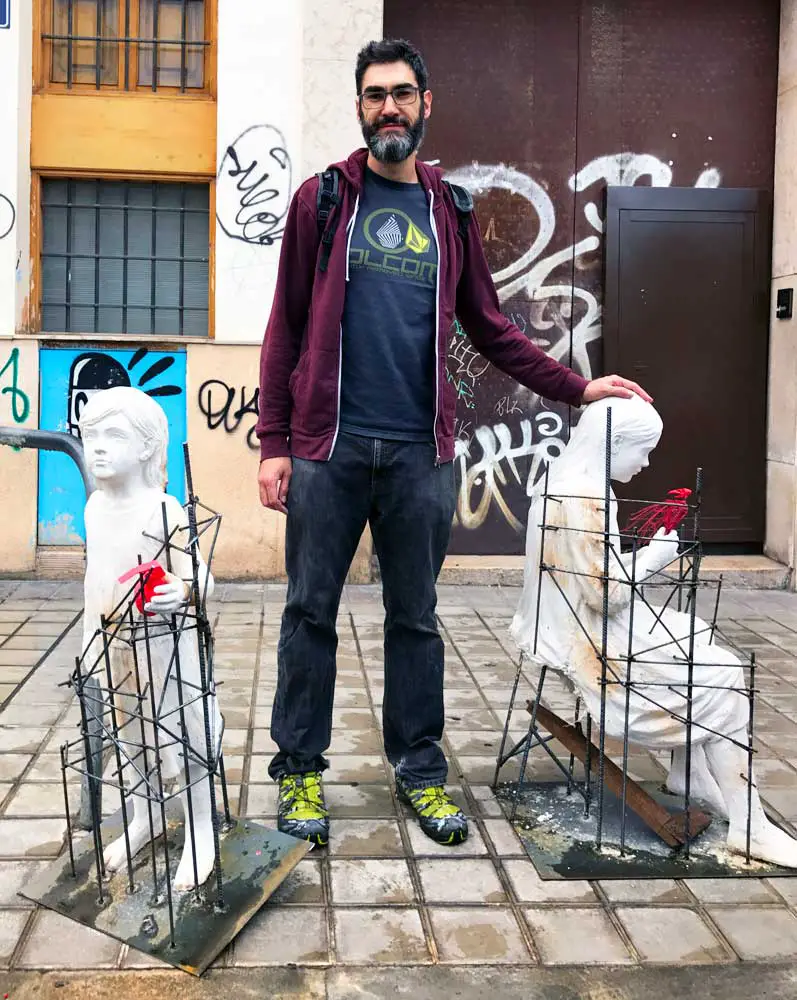
Street Art Festival “Intramurs 2017“, Valencia
How comes you became part of the urban art festival „Intramurs 2017“?
Intramurs is an Art Festival that takes place in Valencia, Spain. In 2017 they celebrated the fourth edition called #encrudo #Raw. There was an international call to take part in the festival and my project „counter-sculpture“ was selected. Intramurs wants to remain a festival which has the streets as a setting and with an audience that completes and shapes the artistic offer.
How long did it take to prepare the three sculptures of little girls for the festival?
It took me about six months to finish the sculptures. This time includes the modelling time, the casting process and the creation of the welded structures that usually appears on my sculptures.
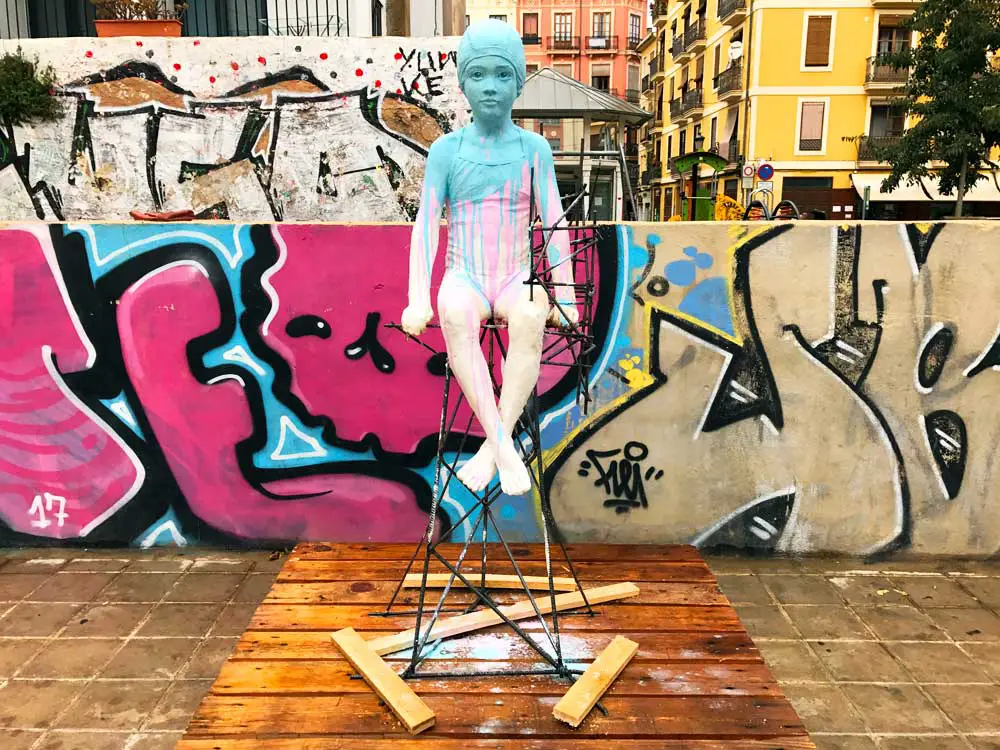
For how long did you put them out in the streets of Valencia and what had happened to them when you came to pick them up again?
The festival took place from 19th to 29th October 2017 and during these days the three sculptures stayed on the streets. During the first four days I checked and fixed the sculptures, one of them was particularly damaged. It had been hit and had many cracks and stains but on the other hand it also had a lipstick kiss mark on its forehead. At the end of the festival two of the pieces had little damages and the other one had disappeared. It reappeared a few months later. I don’t mind if someone breaks one of my sculptures, it is part of the process, but I don’t like it when someone steals one of them. Anyway people in Valencia were very respectful with my pieces of art.
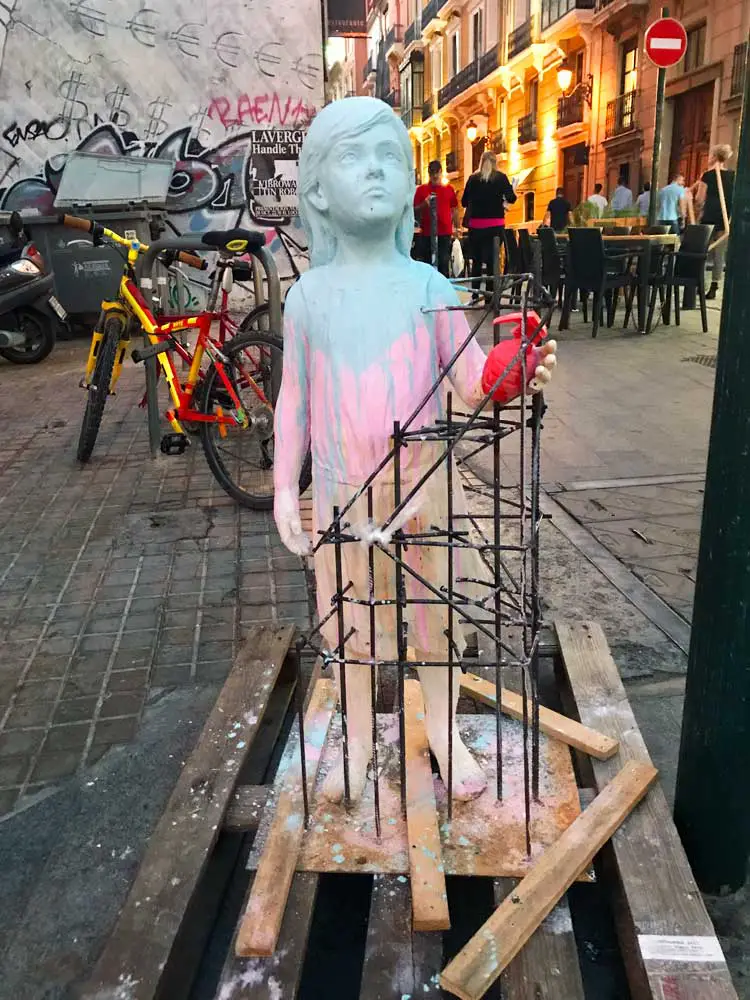
Street Art in Spain
What is special about street art in Spain? Is there such a thing as a Spanish street art scene or are there different scenes in different cities?
I think in Spain there are a lot of great artists, very talented people, some of them are acclaimed international street artists. There is a global Spanish street art scene: same language but different accents.
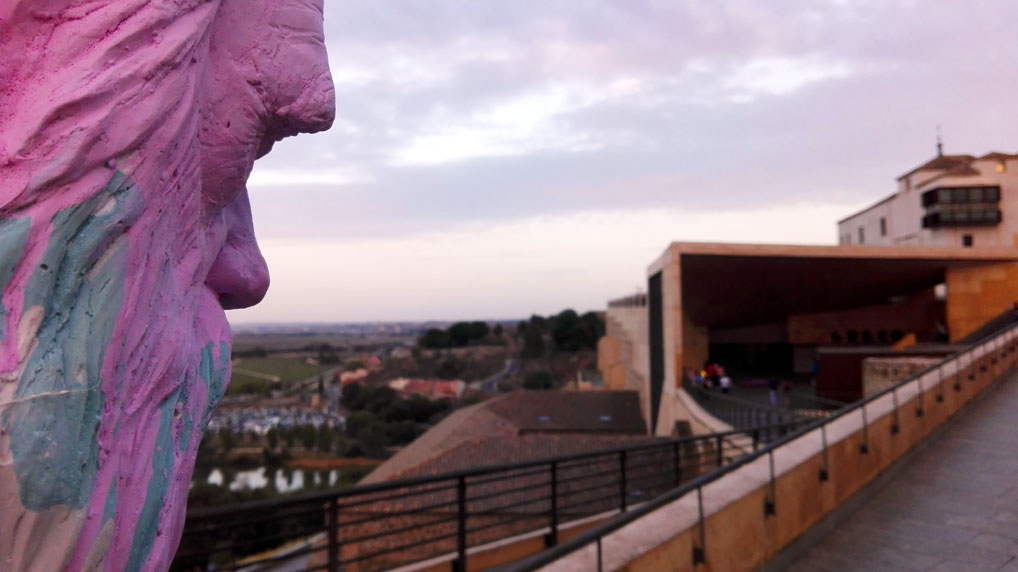
The Art of Rodrigo Romero Pérez
For how long have you been a street artist?
First of all, let me tell you that I don’t know if I am a street artist, I’m sculptor, and part of my work could be considered as street art. I started to install street art sculptures in 2014 but this idea came to my mind a few years before.
Do you „just“ do sculpures or how would you describe your style?
I’m a figurative sculptor. Nowadays, I’m focused on sculpture but I also love drawing, printmaking (linocut, woodcut, …), painting …
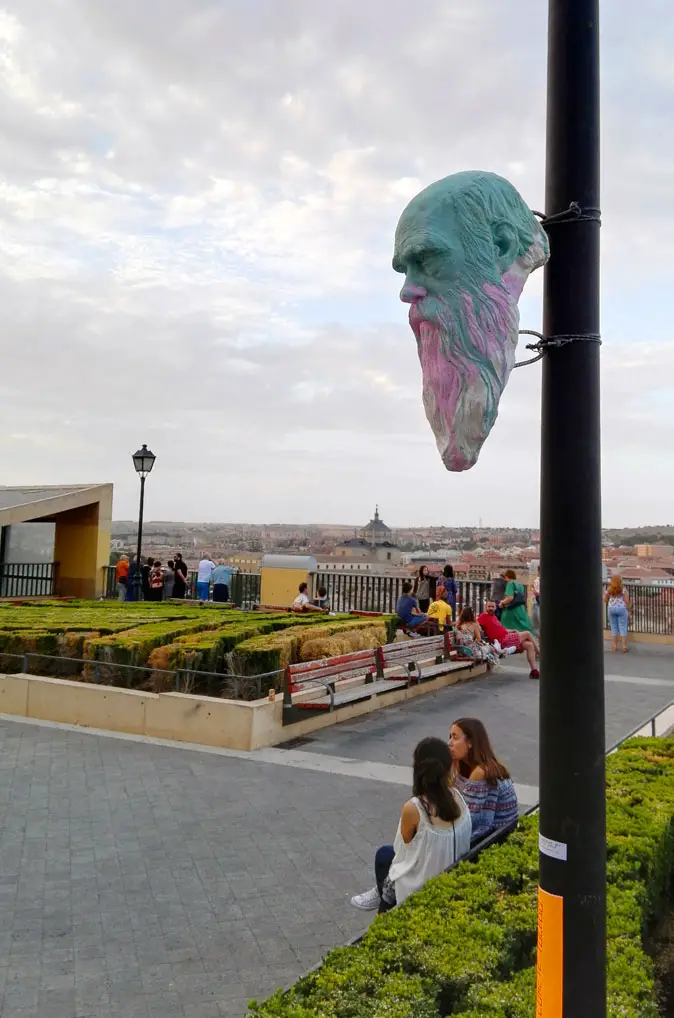
Why did you choose street art as a form of art?
One of the reasons is the fact that people are not used to see sculptures as street art. You can only find sculptures at museums and monuments, but not as street art. It is a sincere way of showing your work, you don’t select your audience as it happens in museum and exhibitions.
The sculptural master piece as urban art becomes something changeable, living and ephemeral. The environment will embrace and attack it. The collective observer will make a decision. As a synergetic approach, the collective actions will have more effects than the individual ones. The piece of art will be consumed by the environment.
The sculpture transforms into an open structure, constantly changing, depending in a vital process. The time for this transformation will be the register of its ephemeral nature.
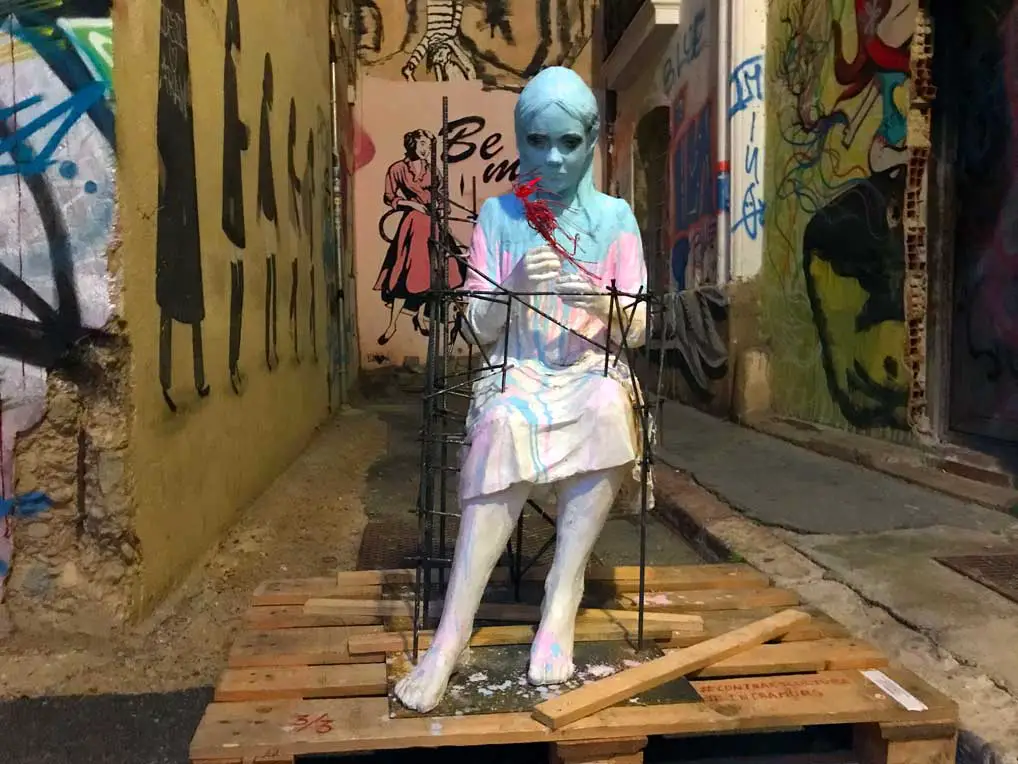
How do you feel about your pieces of street art being destroyed or taken away?
When I install a sculpture on the street, I know it is going to be destroyed. It always hurts but I don’t care, it is part of the process. Most of the pieces are absolutely destroyed in a couple of weeks. On the other hand, I don’t like when one of my pieces is stolen, just because I didn’t install it for this purpose.
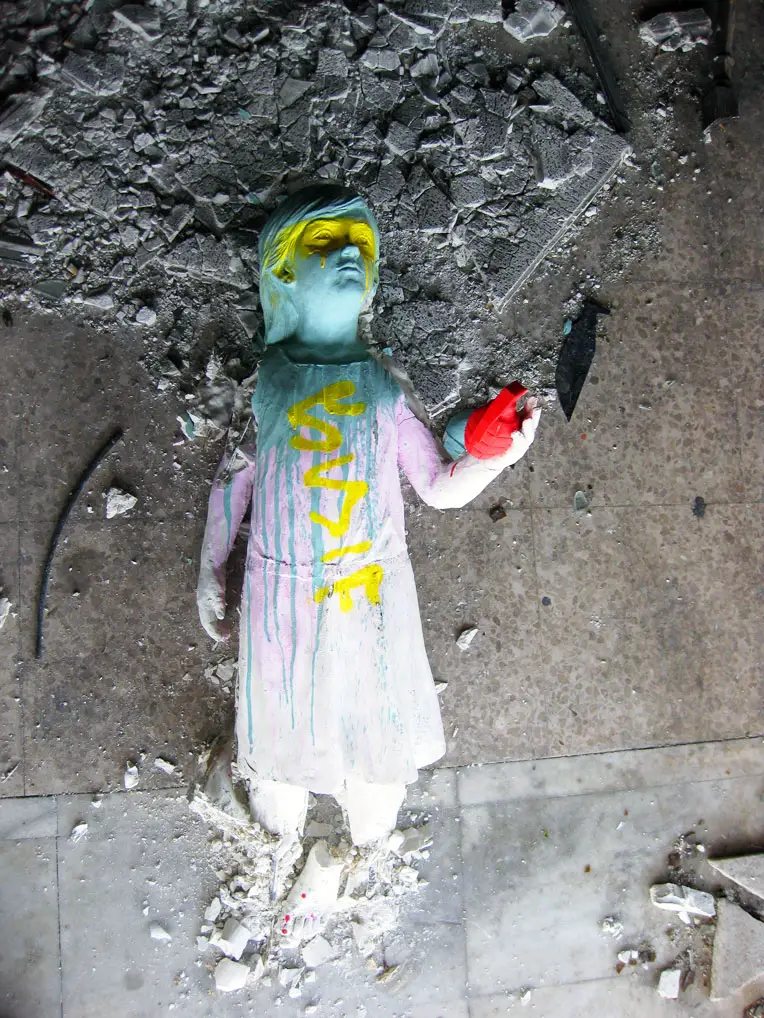
How do you choose the places where you place you street art?
It depends, but I usually look for abandoned buildings with good visibility, places where a sculpture is not supposed to be. For me it is important that the observer gets shocked when he/she finds the piece of street art.
In Spain there are lots of abandoned buildings, this is an example of our economic management.
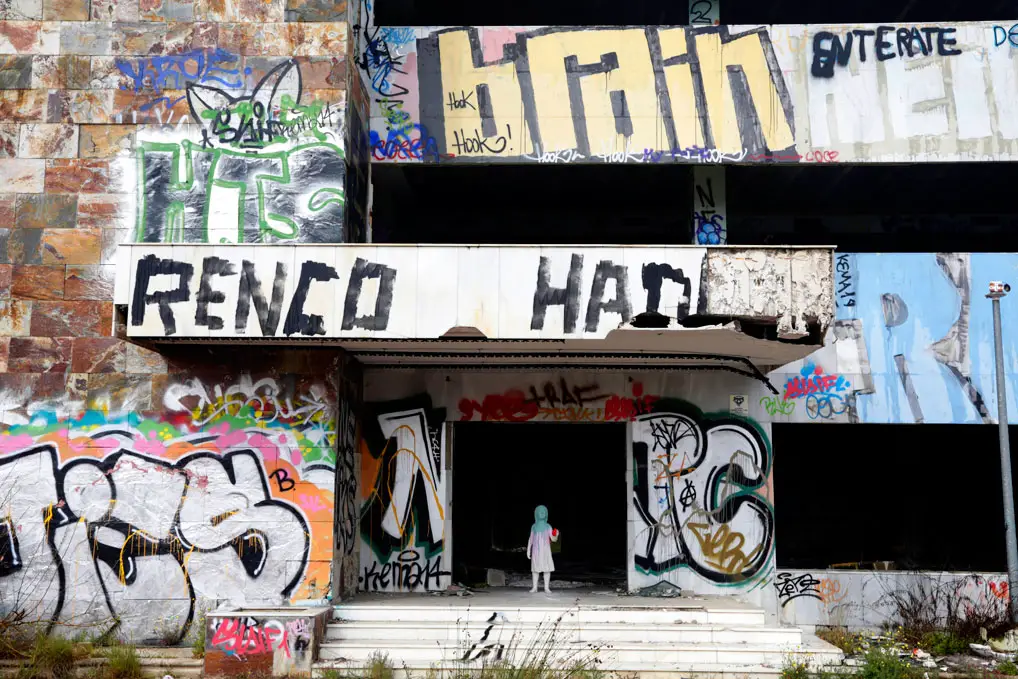
How long does it take you in average to create a piece of street art?
It depends on the size, I could be working months for a big piece or just a few days for a small relief.
Which other artist(s) inspire you most?
This is hard to tell. Nowadays the amount of information is so big, internet, TV, radio, exhibitions, social networks, comic, books … I enjoy a wide range of artists and styles. It is like a huge mosaic!!!
What is the best way to discover street art in new places?
Open your mind, you must be ready to enjoy and to get surprised.
Find Rodrigo Romero Pérez on

Buchtipps für Streetart-Fans
Inzwischen habe ich auch schon ein paar tolle Bücher zum Thema Streetart. Hier meine Lieblinge (* Affiliate-Links):
→ Bildband Street Art: Kunst & Festivals weltweit (Lonely Planet Reisebildbände)*


→ Street Art: Legendäre Künstler und ihre Visionen*

→ Street Art Manual: Techniken, Taktiken, Tools*

More street art features and interviews with artists
Would you like to read more about street art around the globe? Here are some articles:
- Interview with Street Artist Otto Schade aka Osch, London, England
- Endlich London: auf der Suche nach Streetart (in German)
- Streetart in Valencia: bunt, laut, mittendrin (in German)
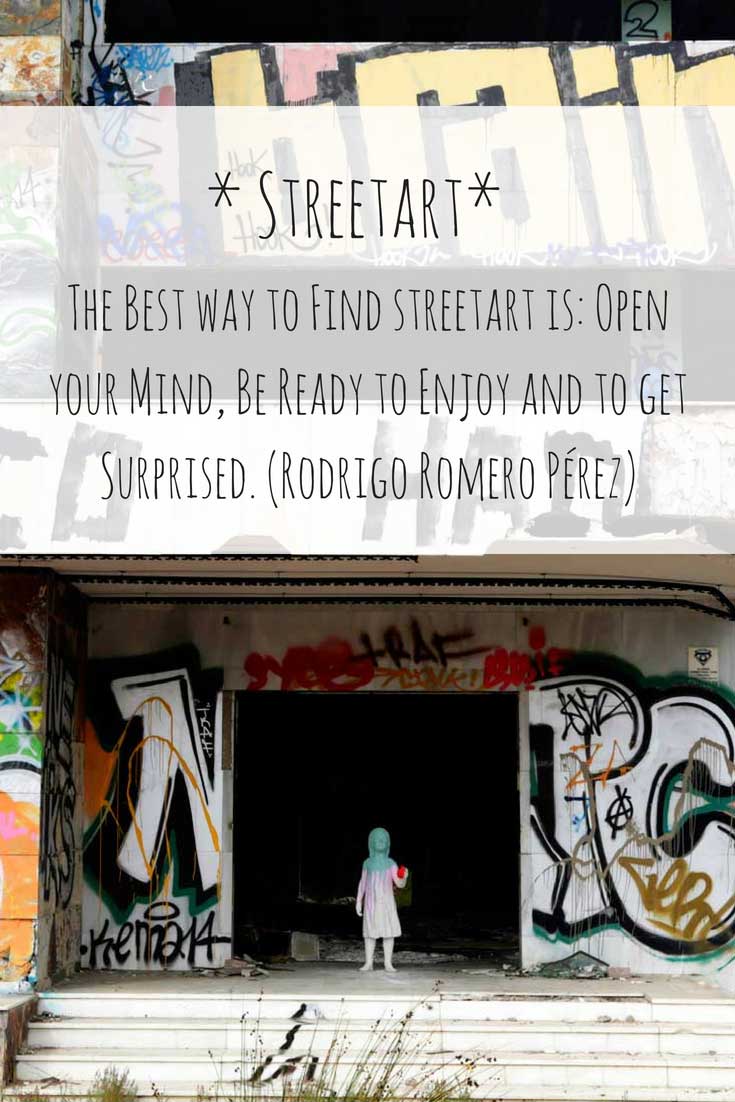


Hello, I enjoy reading all of your article.
I wanted to write a little comment to support you.